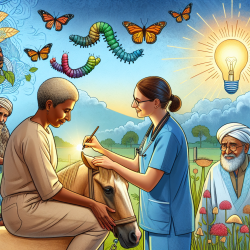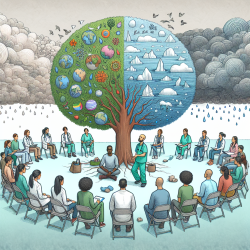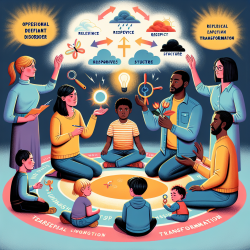Introduction
As practitioners in the field of therapy and education, we are constantly seeking innovative ways to enhance our skills and broaden our understanding. The recent study titled ‘First, do no harm’: systematic program evaluation of an equine veterinary service-learning initiative with Indigenous communities in Canada offers a wealth of insights that can be applied to various fields, including online therapy services like those provided by TinyEYE.
Understanding the Research
This research explores a unique equine veterinary service-learning program that partners veterinary students with Indigenous communities in Canada. The program not only provides essential veterinary care but also enriches students' clinical and cultural competencies. The study employs a mixed-methods evaluation to assess the program's impact on equine care, student learning, cultural awareness, and community education.
Key Takeaways for Practitioners
Here are some actionable insights from the study that can help improve your practice:
- Embrace Cultural Competency: Just as veterinary students gained cultural insights from Indigenous communities, therapists can benefit from understanding the cultural contexts of their clients. This approach fosters trust and enhances the therapeutic relationship.
- Engage in Reciprocal Learning: The study highlights the value of learning from the communities you serve. Encourage a two-way exchange of knowledge and experiences with your clients to enrich your practice.
- Prioritize Ethical Considerations: The principle of "First, do no harm" is central to both veterinary and therapeutic practices. Ensure that your interventions are ethically sound and culturally sensitive.
- Focus on Relationship Building: Building trust and strong relationships with clients is crucial. Take the time to understand their needs and perspectives, just as the veterinary program did with Indigenous communities.
Encouraging Further Research
While the study provides valuable insights, it also opens the door for further exploration. Practitioners are encouraged to conduct their own research to understand the unique needs of their client populations better and to develop culturally competent practices.
Conclusion
The equine veterinary service-learning initiative offers a model of how service-learning can enhance professional skills while fostering cultural understanding and ethical practice. By applying these principles, practitioners can improve their therapeutic approaches and better serve diverse communities.
To read the original research paper, please follow this link: ‘First, do no harm’: systematic program evaluation of an equine veterinary service-learning initiative with Indigenous communities in Canada.










